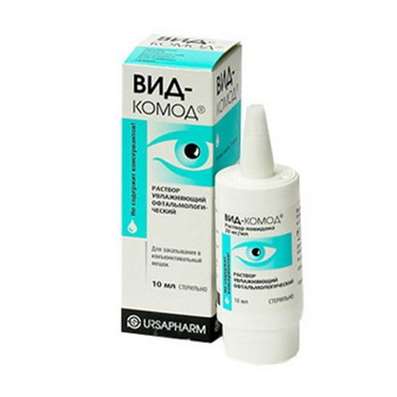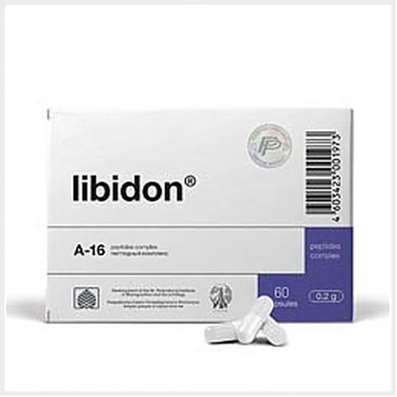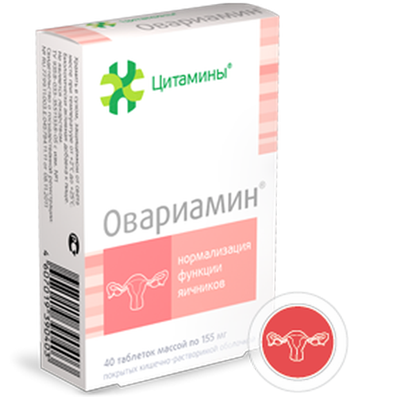Instruction for use: Indacaterol (Indacaterolum)
I want this, give me price
Chemical name: (R) - [2- [5,6-Diethyl-2,3-dihydro-1H-inden-2-yl) amino] -1-hydroxyethyl] -8-hydroxyquinolin-2 (1H) -one
Pharmacotherapeutic group:
Beta-adrenergic agonist
The nosological classification (ICD-10)
J44 Other chronic obstructive pulmonary disease
Allergic bronchitis, Bronchitis asthma, Asthmatic bronchitis, wheeze bronchitis, Bronchitis is an obstructive, bronchi disease, Shortness of sputum in acute and chronic respiratory diseases, Cough in inflammatory diseases of the lung and bronchus, Reversible airflow obstruction, Reversible obstructive airway disease, Obstructive bronchitis disease, Obstructive lung disease, Obstructive bronchitis, Spastic bronchitis, Chronic lung disease, Chronic nonspecific lung diseases, Chronic obstructive pulmonary disease, Chronic obstructive bronchitis, Chronic obstructive airway disease, Chronic obstructive pulmonary disease, Restrictive lung pathology
CAS Cade 312753-06-3
Characteristics
Bronchodilator agent (selective agonist of beta2-adrenergic receptors).
Pharmacology
Pharmacological effect
pharmacodynamics
Selective agonist is indacaterol beta2-adrenoceptor prolonged action (within 24 hours) after a single administration. Pharmacological effects of beta2-adrenergic agonists, including indacaterol associated with stimulation of intracellular adenylate cyclase, the enzyme that catalyzes the conversion of ATP into cyclic 3 ', 5'-AMP (cAMP). Increased cAMP leads to relaxation of smooth muscles of the bronchi. Indacaterol is almost full agonist beta2-adrenergic receptors; stimulating effect on beta2-adrenergic receptors is 24 times stronger than at beta1-adrenergic receptors, and 20 times stronger than beta3-adrenergic receptors.
After inhalation of indacaterol has a rapid and long-lasting bronchodilatory effect.
Indacaterol provides sustained significant improvement in lung function (FEV 1 increase th s FEV1) for 24 hours. It is characterized by rapid onset (within 5 min after the inhalation), comparable to the effect of salbutamol, short-beta2 adrenoceptor agonist. The maximum effect of indacaterol observed after 2-4 hours after inhalation. Patients receiving indacaterol for 1 year, there was no development of tachyphylaxis to the bronchodilator effect of the drug. When using indacaterol showed no bronchodilatory action depending on the time of inhalation of the drug throughout the day (morning or evening).
Indacaterol reduce dynamic and static hyperinflation (increased lung volume at the end of spontaneous exhalation) in patients with moderate to severe COPD. In applying the drug showed a statistically significant increase in inspiratory capacity and FEV1, dyspnea, improved exercise tolerance. Also observed a significant reduction in the risk of COPD exacerbations (increased time to next exacerbation), reducing the need for inhaled beta2-adrenergic agonists short-acting and improving the quality of life of patients (estimated using certified questionnaire St George's Hospital).
Pharmacokinetics
Absorption. Following single or repeated inhalation indacaterol mean Tmax serum is about 15 minutes. Systemic exposure indacaterol increased with increasing dose (ranging from 150 to 600 mcg) and is dose dependent. After a single inhalation absolute bioavailability of indacaterol - about 43%. Systemic exposure is a result of absorption of the drug in the lungs and gut. serum concentration of indacaterol increased with repeated use. Css achieved within 12-15 days of application. When indacaterol inhalation of 1 time per day (doses ranging from 75 to 600 mg) for 14 days cumulation coefficient indacaterol, estimated by the exposure of the drug on the 1st and the 14th (or 15th) day (AUC0-24) is from 2.9 to 3.8.
Distribution. After the on / in the Vd indacaterol was 2,361-2,557 liters, indicating a significant distribution. Communication with serum proteins and human plasma is 94,1-95,3% and 95,1-96,2% respectively.
Metabolism. When taken orally radiolabeled unmodified indacaterol indacaterol is a major component of serum and is about 1/3 of the total AUC0-24, associated with the drug. Of the metabolites in the blood serum is determined to the greatest degree indacaterol hydroxylated derivative. Next dominated phenolic O-glucuronide of indacaterol and hydroxylated indacaterol. Later identified hydroxylated derivative diastereomers, N-glucuronide indacaterol and C- and N-dezalkilirovannye products.
UDP-GT (UGT1A1) is the only isoenzyme metabolized indacaterol to the phenolic O-glucuronide. Indacaterol hydroxylation occurs mainly via isoenzyme CYP3A4. Also it found that indacaterol is a substrate for a membrane transporter molecules P-gp, but has a low affinity.
Elimination. The amount of unchanged indacaterol excreted in the urine, is less than 2% of the dose. Renal clearance of indacaterol was, on average 0,46-1,2 l / h. Given that the serum clearance of indacaterol 18,8-23,3 l / h, it is obvious that the excretion of the drug through a small kidney (approximately 2-5% systemic clearance).
When taken orally, indacaterol deduced mainly through the intestine (90% of dose) as unchanged (54% of dose) and a hydroxylated metabolites (23% of dose).
Indacaterol concentration in serum decreases stepwise with an average final T1 / 2 in the range from 45.5 to 126 hours. T1 / 2, based on the calculated accumulation after repeated use indacaterol ranged from 40 to 56 hours, consistent with the set time equilibrate state (12-15 days).
Pharmacokinetics in special patient groups
Age, gender, and body weight did not affect the pharmacokinetics of indacaterol in patients with COPD. The impact of race on pharmacokinetic parameters indacaterol unlikely. The experience of blacks in persons is limited.
Abnormal liver function. The pharmacokinetics of indacaterol (AUC, Cmax, protein binding) were not significantly altered in patients with mild to moderate hepatic impairment. Use in patients with severe hepatic impairment has not been studied.
Impaired renal function. Since indacaterol excreted by the kidneys to a small extent, the pharmacokinetics in patients with impaired renal function has not been studied.
Indications
Long-term maintenance therapy bronchial obstruction in patients with chronic obstructive pulmonary disease.
Contraindications
Hypersensitivity to indacaterol; Pregnancy and breast-feeding; age of 18 years (effectiveness and safety have been established).
Restrictions apply
Precautions: Patients with underlying cardiovascular disorders (coronary heart disease, acute myocardial infarction, arrhythmia, hypertension), convulsive disorders, thyrotoxicosis, diabetes mellitus; Patients with the syndrome of congenital QT prolongation; Patients receiving both drugs, lengthening the interval QT (antiarrhythmics class IA and III, tricyclic and tetracyclic antidepressants, antipsychotics, macrolides, antifungals, imidazole derivatives, some antihistamines, including astemizole, terfenadine, ebastine), preparations for the general barbiturate anesthesia from the group, as well as patients with a history of inadequate response to a beta2-adrenergic agonists.
Pregnancy and breast-feeding
The safety of indacaterol during pregnancy has not been established. Indacaterol during pregnancy is contraindicated.
When applying indacaterol animals (at doses equivalent to the therapeutic dose in humans) did not reveal any reproductive toxicity. Indacaterol can be used during pregnancy only if the expected benefit to the mother outweighs the potential risk to the fetus.
Like other beta2-adrenergic agonists, indacaterol may inhibit the birth process as a result of tocolytic action (relaxing effect on the smooth muscles of the uterus).
It is not known whether indacaterol passes into breast milk in humans. Since the use of indacaterol in animals is excreted in breast milk can not exclude adverse effects on the baby during breastfeeding in humans. If necessary, the use of feeding a child breast milk drug should be discontinued.
Category effects on the fetus by FDA - C.
Side effects of indacaterol
In the application of indacaterol in therapeutic doses, the most commonly observed following adverse events (AEs): nasopharyngitis, upper respiratory tract infection, cough, headache and muscle cramps. Most of the above-mentioned adverse events were mild or moderate severity, the incidence of these adverse events decreased with continued use.
The following are adverse events, notes the application of indacaterol in doses of 150 and 300 mg 1 time per day in patients with COPD. Adverse reactions are distributed in accordance with the frequency of occurrence. The following criteria are used to assess frequency: very common (≥1 / 10); commonly (≥1 / 100, <1/10); uncommon (≥1 / 1000, <1/100); rare (≥1 / 10,000, <1/1000); very rare (<1/10000), including isolated reports.
Infections and infestations: very often - nasopharyngitis, upper respiratory tract infection; often - sinusitis.
Immune system: rarely - hypersensitivity reactions.
With the respiratory system: often - cough, sore throat, feeling of irritation in the throat, runny nose; rarely - paradoxical bronchospasm.
Skin and subcutaneous tissue: often - a rash, itching.
From the musculoskeletal system: often - muscle spasm, pain in the bones; rarely - myalgia.
From the nervous system: often - dizziness; rarely - paresthesia.
From the CCC: frequently - coronary heart disease, heart; rarely - atrial fibrillation, tachycardia.
From the digestive system: often - dry mouth.
Disorders of metabolism: often - hyperglycemia / new-onset diabetes.
General disorders and reactions at the injection site: common - peripheral edema, pain in the chest area (non-cardiogenic).
When using indacaterol maximum (deprecated) a dose of 600 mg 1 time per day the safety profile did not differ significantly from that of inhaled therapeutic doses (150 and 300 mg 1 time per day). Additional adverse events were anemia and tremors. Also, more often identified nasopharyngitis, muscle cramps, headache and peripheral edema.
In patients with COPD, inhalation at recommended doses of indacaterol has no clinically significant systemic effects of beta2-adrenomimeticheskoe. Average heart rate is not changed by more than 1 u. / Min. The frequency of tachycardia (observed in rare cases) significant prolongation of the QTc interval (> 450 ms for men and> 470 ms for the women) and hypokalemia was similar to that of placebo.
Changes in plasma glucose concentrations were similar to those in the placebo group.
In clinical studies for 15 seconds after inhalation of the drug in patients (in 17-20% of cases) noted the development of sporadic cough lasting about 5 seconds. The occurrence of cough after inhalation slightly disturbed patients and did not require discontinuation of drug treatment (cough as a symptom of COPD, and only 6.6% of patients with a cough associated with the use of the drug). There was no relationship between cough observed immediately following inhalation of the drug, and the development of bronchospasm, exacerbation of COPD worsening COPD and decrease the effectiveness of indacaterol.
Interaction
Beta2-agonists, long-acting
Indacaterol should not be used simultaneously with other beta2-adrenoceptor agonists long acting or drugs, which include a beta2 agonists of long action.
Drugs prolonging the QT interval
As with other beta2-adrenergic agonists, indacaterol during therapy with possible prolongation of the interval QT. Since this indacaterol impact on the length of the QT interval may be potentiated by other drugs, the drug should be used with caution in patients receiving MAO inhibitors, tricyclic antidepressants, or other drugs prolonging QT interval. QT prolongation increases the risk of ventricular arrhythmias.
sympathomimetic drugs
Concomitant use of indacaterol with sympathomimetics (both separately and as part of combination therapy) may increase the risk of adverse events.
kaliopenia
The simultaneous use of methylxanthine derivatives, corticosteroids or diuretics, potassium, leading out, can amplify possible hypokalemia caused agonists beta2-adrenergic receptors.
Blockers beta2-adrenoceptor
Since the beta2-adrenergic blockers can weaken or inhibit the effect of the action of agonists beta2-adrenergic receptors, indacaterol should not be used simultaneously with the beta2-adrenergic receptors blockers (including eye drops).
If necessary, use both classes of drugs are preferably used cardioselective beta1-adrenergic receptor blockers, but they should be used with caution.
Interaction at the level of CYP3A4 isoenzyme and membrane transporter P-gp
It was studied the interaction of indacaterol with specific inhibitors of CYP3A4 and P-gp, such as ketoconazole, erythromycin, verapamil and ritonavir.
The simultaneous use of verapamil indacaterol resulted 1.4-2-fold increase in AUC and 1.5-fold increase in Cmax. When applying indacaterol with erythromycin was an increase in AUC and Cmax 1.4-1.6 times 1.2 times. Combination therapy indacaterol and ketoconazole caused a 2-fold and 1.4-fold increase in AUC and Cmax, respectively. This increase in exposure due to drug interactions does not lead to a change in the safety profile. With simultaneous use of indacaterol with ritonavir (an inhibitor of CYP3A4 and P-gp) was an increase in AUC by 1.6-1.8 times, however, Cmax remains unchanged.
When applying indacaterol drug interactions with other drugs was observed. Studies in vitro indicated that indacaterol has little potential for drug interaction on the level of metabolism, or enzymes at the level of membrane transporters in systemic exposure achievable at therapeutic doses appointment.
Overdose
Symptoms: after a single application of indacaterol in patients with COPD at a dose 10 times the maximum therapeutic, noted a moderate increase in heart rate, increased blood pressure and QTc prolongation.
The most likely symptoms of overdose are tachycardia, tremor, palpitations, headache, nausea, vomiting, drowsiness, ventricular arrhythmias, metabolic acidosis, hypokalemia and hyperglycemia (caused by increased systemic beta2-Adrenomimeticalkie action).
Treatment: shows the supporting and symptomatic therapy. In severe cases, patients need to be hospitalized. If necessary, possible to use cardioselective beta-adrenoceptor blockers. Use cardioselective beta-adrenoceptor blockers with caution, only under strict medical supervision, since their use may provoke the development of bronchospasm.
Routes of administration
Inhalation.
Precautions
Special patient groups
No dosage adjustment is required in patients aged ≥65 years, patients with impaired liver and kidney function mild to moderate severity. The use of indacaterol in patients with impaired has not been studied, severe hepatic or renal function.
hypersensitivity Reactions
Against the background of indacaterol were recorded reactions of immediate hypersensitivity. If there are signs that the development of an allergic reaction (such as difficulty breathing or swallowing, swelling of the tongue, lips and face, hives, skin rash), the drug should be abolished and choose an alternative therapy.
Bronchial asthma
Due to lack of data on prolonged use of indacaterol in patients with bronchial asthma drug should not be used in these patients. The use of agonists beta2-adrenoceptor for long-acting asthma therapy may be associated with an increased risk of developing serious side effects (data obtained as a result of a multicenter clinical trial of the use of salmeterol in patients with asthma).
paradoxical bronchospasm
As with any other inhalation therapy, the use of the drug can lead to the development of paradoxical bronchospasm, which represents a threat to the life of the patient. In the case of paradoxical bronchospasm drug treatment should be discontinued immediately and alternative therapy is appointed.
The worsening of the underlying disease
Indacaterol should not be used for the relief of acute bronchospasm, ie not be used as an emergency treatment. In the event of deterioration of COPD on a background of drug treatment, it is necessary to re-evaluate the condition of the patient and review the treatment regimen of the disease.
Impact on CCC
In some patients, indacaterol, like other β2-adrenergic agonists, can affect the cardiovascular (including increased heart rate, blood pressure). In case of adverse events may require cessation of drug therapy. In addition, the application of agonists beta2-adrenoceptor following electrocardiographic changes may occur: the flattening of the T wave, prolongation of the QT interval and depression of segment ST (however, the clinical significance of these changes has not been established).
When applying indacaterol in clinical trials (in recommended therapeutic doses) significant lengthening QT interval versus placebo were observed.
kaliopenia
In some patients, the application of agonists beta2-adrenergic receptors may experience significant hypokalemia, leading to the development of adverse events with the CCC. Reducing the concentration of potassium in serum is usually transient and do not require correction. In patients with severe COPD, hypokalaemia may be aggravated by hypoxia and concomitant treatment, which in turn may increase the likelihood of arrhythmias.
hyperglycemia
Inhalation of high doses of beta2-adrenergic agonists may increase the level of glucose in the blood plasma. In applying the drug in patients with diabetes should regularly monitor the concentration of glucose in the blood plasma. In clinical studies of patients receiving the drug (at the recommended dosage) was an increase in the incidence of clinically significant hyperglycaemia on average 1.2% compared with placebo. Efficacy and safety of use in patients with uncompensated diabetes mellitus have not been studied.
Effects on ability to drive vehicles and use machines. Data on the impact on the ability to drive vehicles and operate with no mechanisms.

 Cart
Cart





